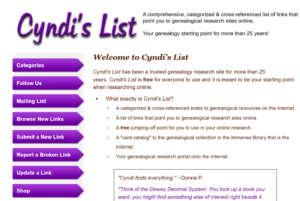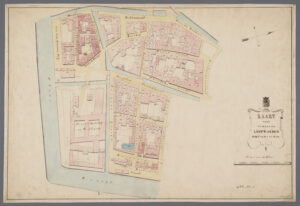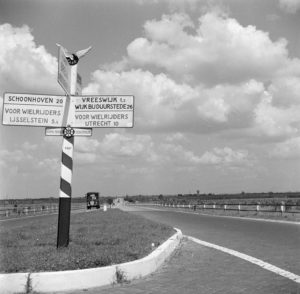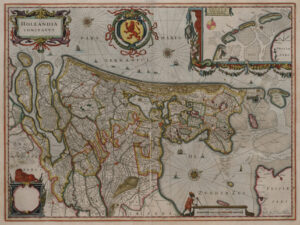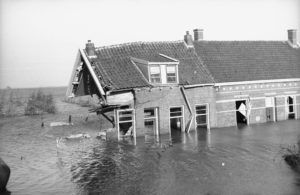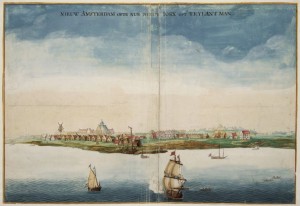This week we are looking at a map of Drenthe in 1933. It is a tourist map from Sleeswijk's pocket atlas for the Netherlands for walkers, bicyclists, and automobile drivers, made in 1933. The whole atlas is available at the website of the National Archives in The Hague. The map shows different kinds of connections: Railroads and tram lines in black Main roads in wide solid orange Brick roads in dotted orange Paved roads in narrow solid orange Unpaved roads in dashed orange … [Read more...]
About this website
Creating a website like this is a fun activity. There are so many options, so many choices. What do visitors want? What do I want? In this blog I will describe some of the things I encounter in developing and maintaining this website.
Cyndi’s List – A Valuable Resource
Cyndi's List is categorized & cross-referenced list of genealogy links created and curated by Cyndi Ingle, a professional genealogist, author, and educator from the United States. Cyndi's List contains more than 300,000 references to resources you can use for your research. Cyndi and I first "met" online in 1996, shortly after she started her list. We're two internet genealogy pioneers! I am proud that Yvette' Dutch Genealogy Homepage, as my website was known then, was one of the … [Read more...]
Map of the Week – Leeuwarden Ward C, 1843
This week, we are looking at a ward map for Leeuwarden. The map shows buildings in ward C in 1843, with their house numbers. In many places in the nineteenth century, houses were indicated by their ward letters and house numbers. One ward would consist of several streets, so only one street in the ward would have a house number 1, for example. This makes it very hard to translate old addresses to modern addresses. See tips to find the address. Reseachers with ancestors in Leeuwarden in the … [Read more...]
Map of the Week – Ouddorp, 1868
Between 1865-1868, Jacob Kuyper published a series of atlases with municipal maps. These show the location of all the hamlets, villages, and larger towns in the municipality, as well as the main roads and railroads. The Kuyper maps are often available at the websites of archives or via Wikimedia Commons. This week we are looking at a map of Ouddorp. I know several readers have ancestors from that village, since many people emigrated from Ouddorp in the mid-1800s. The map shows the … [Read more...]
Quick tip – Beware of same-named places
Some places in the Netherlands have the same name as other places. This can cause issues during research, if you are looking for your ancestors in the wrong place. See the article about non-unique place names in the Netherlands for an overview. You can also check Van der Aa's gazetteer to see where a place may have been located. … [Read more...]
Map of the Week – Holland, 1659
In 1659, the famous mapmaker Joan Blaeu published his world atlas Tooneel des Aardrycks [Display of the Realm of Earth]. The archives in Leiden have made their atlas available online. This week we are looking at his map of the county of Holland. The map shows several lakes have already been turned into polders, such as the Beemster, Purmer, Schermer, and Wormer. The Haarlemmermeer was still a lake. The largest city on the map if Amsterdam, connected to the Zuyder Zee [South Sea, a bay of the … [Read more...]
Dutch Genealogy News for October 2024
Here is an overview of the new sources, projects, and other news from the past month. Sources The De Hullu Collection at the Zeeuws Archief has been largely digitized. De. J. de Hullu made many scientific notes and transcripts, mainly regarding the history of the western part of Zeeuws-Vlaanderen. His collection is of special importance since many original records from the area were lost in World War II. Many Noord-Brabant death records 1971-1973 have been scanned and indexed and are … [Read more...]
Map of the Week – Connections in Utrecht, circa 1919
This map, created shortly after the end of World War I, shows the different connections in the province of Utrecht The legend identifies the different types of lines on the map: railroads tramways paved roads gravel roads provincial border dikes hills. The 1800s saw a tremendous increase in infrastructure. This map captures the rail and tram infrastructure at its height. In the course of the 1900s, many rail and tram lines were abolished as cars and transport by road … [Read more...]
Named Fellow for the New Netherland Settlers project
The Gladys Krieble Delmas Foundation has awarded a $12,000 grant to the New York Genealogical & Biographical Society to support a Fellow for their New Netherland Settlers project. I am honored to announce I have been named in that position. As a Fellow, I will research underrepresented and underexamined populations within New Netherland such as free and enslaved individuals, Indigenous people, and the many others who contributed to the diverse, multilingual dynamics of New … [Read more...]
Map of the Week – Overijssel, 1680
This map of Overijssel was originally created by Nicolaas ten Have and printed by Frederik de Wit in 1680. Such maps can be useful to understand the location where your ancestor lived. It shows the major roads and rivers. It also shows the jurisdictions, in this case the Land van Vollenhove in blue, Salland in yellow, and Twente in pink. The map shows some local features like noble manors, castles, water mills, and quarries. … [Read more...]

